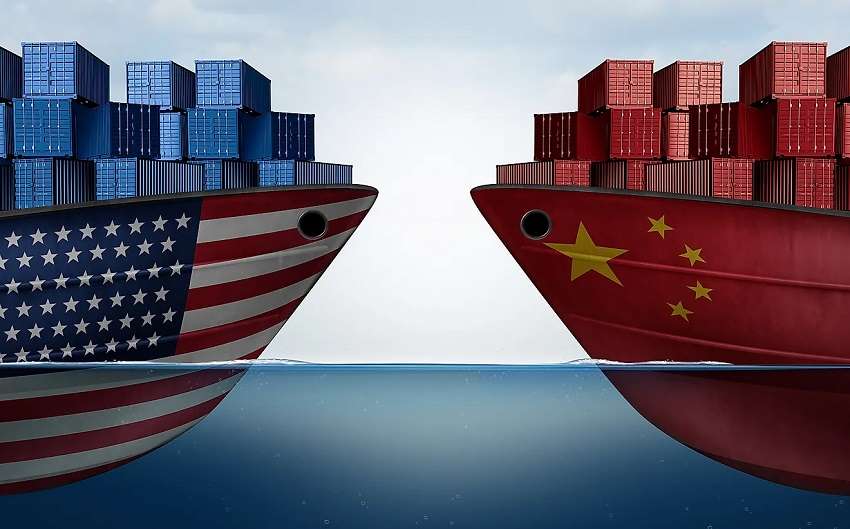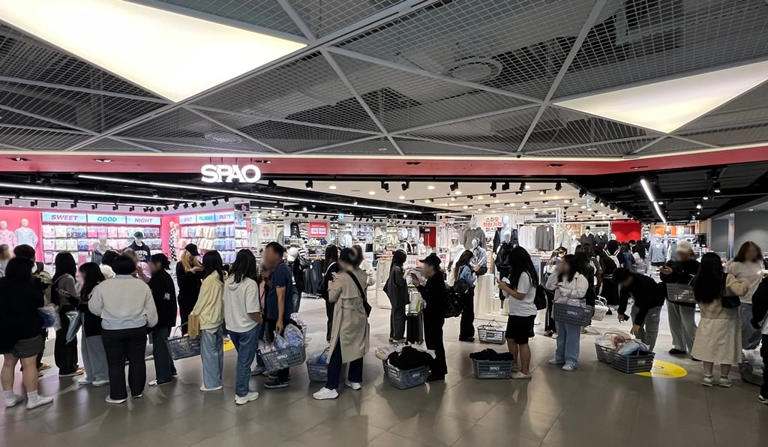FW
In Q1 FY24, the net revenues of Prada SpA by 16 per cent at constant exchange rates to €1.19 billion ($1.27 billion) as against the analysts’ expectations of €1.17 billion jumped as the Italian fashion group, which also owns Miu Miu continues to outperform its biggest rivals.
The brand’s performance was particularly strong in Asia Pacific, including China, which a year ago was reopening after the strict lockdowns of 2022. Appreciating the brand’s performance Patrizio Bertelli, Chairman, says, the brand performed exceptionallywell even amidst a challenging market environment.
During the quarter, the Lyst index ranked Miu Miu and Prada amongst the hottest brands in the world. In particular, the analyst Lyst pointed to a popular sneaker collaboration between Miu Miu and New Balance.
The strong performance of Prada stands in sharp constrasts to the weak results of its French rival Kering, whose biggest brand Gucci is facing a tough turnaround as it seeks to reposition itself in a more exclusive segment.
Miuccia Prada, the granddaughter of the group’s founder, is creative director at Miu Miu and splits those duties at Prada with Raf Simons.
Surpassing analysts’ expectations, demand for luxury products by Hermes increased by 17 per cent at constant exchange rates to €3.8 billion ($4.1 billion) during Q1FY24.
Revenues of the brand in key Asia markets excluding Japan rose by 14 per cent to €1.92 billion during the quarter. Additionally, its leather goods and saddlery division outperformed estimates with robust 20 per cent growth.
Known for its appeal to the most affluent clientele, Hermes has weathered the challenges facing the luxury market with notable success. This stands in contrast to the struggles of Kering SA, particularly in its efforts to revitalise its flagship brand, Gucci, a process that is proving to be time-consuming.
Although Hermes noted a decline in foot traffic in Greater China, particularly in March, following the Chinese New Year, purchases of higher-end leather, ready-to-wear, and jewelry items increased during the period. Eric Du Halgouet, Chief Financial Officer explains, number of customers opting for more affordable products like silk scarves declined slightly during this period. However, there was a notable uptick in those splurging on luxury goods.
Hermes' perfume and beauty, as well as silk divisions grew by 4.3 per cent and 7.9 per cent, respectively, throughout the quarter.
Renowned for its high-quality sewing and embroidery threads, German-based company Amann has inaugurated its maiden production plant in India. Located in Ranipet, Tamil Nadu, this facility marks a significant milestone for the company as it expands its footprint into the Indian market, catering primarily to the leather and apparel industries.
Equipped with a state-of-art technology, the plant is Amann’s most sustainable production site till date, says Peter Morgalla, Chairman. Spanning across 32,000 sq m, the plant aims to create employment opportunities for 200 individuals.
Notably, Amann has installed a Zero Liquid Discharge unit at the plant to ensure minimal water wastage and prioritise environmental sustainability. The plant relies on renewable energy sources, with a substantial portion of its energy needs met through photovoltaic systems and nearby wind and solar parks. Biomass fuels the boiler required for steam production, essential for the dyeing process of threads, further underscoring the company's commitment to eco-friendly practices.
The plant offers efficient delivery options and reduced lead times across Asia. Additionally, the company commits to providing technical advisory services to empower customers to maximise the potential of its products.
Sanjeev Grewal, Managing Director, Amann, attributes the company’s success to longstanding partnerships with both global brands and Indian clientele. Established in 2007, Amann has sales offices in Chennai, Bengaluru and Gurgaon. The company remains dedicated to maintaining its position as a leader in quality and innovation within the Indian sewing thread industry.
Amann, a German-based company, has inaugurated its inaugural production facility in Ranipet, Tamil Nadu, marking its entry into the Indian market. Specializing in sewing and embroidery threads for the leather and apparel sector, the plant emphasizes sustainability and cutting-edge technology, aiming to minimize environmental impact.
Peter Morgalla, Chairman of Amann India, expressed pride in the launch, highlighting the plant's strategic significance in facilitating efficient delivery and short lead times across Asia. Additionally, the facility will offer technical advisory services to optimize product utilization for customers.
Spanning 32,000 square meters, the plant is expected to create job opportunities for 200 individuals. Notably, Amann's commitment to sustainability is evident through investments in a Zero Liquid Discharge (ZLD) unit and renewable energy sources like photovoltaic, wind, and biomass systems.
Sanjeev Grewal, Managing Director at Amann, emphasized the company's gratitude for its enduring partnerships and its dedication to maintaining a leading position in India's sewing thread industry.
Established in India since 2007, Amann's expansion underscores its commitment to serving the growing demand in the region while upholding its reputation for quality and innovation.
India's cotton stocks are set to plummet by almost 31 per cent in the 2023/24 period, hitting their lowest levels in over three decades, reports the Cotton Association of India (CAI). This decline, driven by decreased production and increased consumption, may curtail exports from the world's second-largest producer, impacting global prices positively. However, it could spell trouble for domestic textile firms, potentially inflating local prices and squeezing margins.
Projections indicate that by the end of the marketing year, cotton stocks could dwindle to a mere 2 million bales (340,000 metric tons). CAI forecasts India's cotton production for the current season at 30.97 million bales, a slight decrease from the previous year's 31.89 million. Meanwhile, domestic consumption is anticipated to rise to 31.70 million bales compared to 31.10 million previously.
Despite the impending shortage, CAI predicts an uptick in India's cotton exports for the season, estimating a rise to 2.20 million bales from 1.55 million last year. India primarily exports cotton to major destinations including China, Bangladesh, and Vietnam.
International Market Analysis Research and Consulting Group (IMARC Group) recently released a thorough analysis titled “Cotton Yarn Manufacturing Plant Project Report 2024,” offering a detailed roadmap for establishing a cotton yarn manufacturing plant. Covering a broad spectrum from market dynamics to operational intricacies, the report delves into unit operations, raw material requisites, infrastructure essentials, machinery specifications, and logistical prerequisites.
Beyond operational details, the report delves into the cotton yarn manufacturing process, project economics, and financial analysis. Crucial metrics such as capital investments, operating expenses, and expected ROI are meticulously explored, equipping entrepreneurs with invaluable insights for informed decision-making.
Cotton yarn, renowned for its versatility and comfort, remains a cornerstone of the textile industry. Its widespread use in clothing, home textiles, and industrial applications underscores its significance. Market growth is propelled by burgeoning demand in apparel and home furnishing sectors, coupled with a shift towards sustainable fibers like organic cotton. Furthermore, the surge in hand knitting and crochet hobbies contributes to market expansion.
With evolving consumer preferences emphasizing sustainability and quality, the cotton yarn market is poised for continuous growth. IMARC Group’s comprehensive report serves as a strategic tool for stakeholders navigating this dynamic landscape, facilitating successful ventures in cotton yarn manufacturing.
Indian textile giant Welspun Living has announced a significant 16 per cent rise in consolidated net profit to Rs 146 crore ($17.5 million) for the fourth quarter ending March 31. This growth, from Rs 125 crore in the same period last year, reflects the company's robust performance amidst challenging market conditions. Revenue for the quarter also witnessed a substantial uptick, soaring by 19 per cent to Rs 2,617 crore compared to Rs 2,195 crore in the previous year.
For the fiscal year 2024, Welspun Living's total income reached Rs 9,825 crore, with a net profit of Rs 681 crore. Dipali Goenka, the Managing Director and CEO, attributed this success to the company's relentless pursuit of excellence. She highlighted the achievement of the highest quarterly and yearly revenues in Q4 and FY24, with a remarkable 20 per cent yearly growth and a sustainable EBITDA of 15.4 per cent.
Despite subdued retail market sentiments, Welspun Living's domestic retail business demonstrated resilience. With its flagship brand 'Welspun' solidifying its leadership position across the country, the company achieved its highest-ever revenues in FY24. Welspun Living, renowned for its home textiles offerings, continues to strengthen its presence in the market with a wide array of products including bed sheets, bath linen, and curtains under its private labels.

The home textile industry, once a bright spot in global exports, faced a slump for over a year. However, there are signs of revival, and three South Asian countries – India, Pakistan, and Bangladesh – are vying for lead in this resurgent market.
Growth Champions: Bangladesh takes the lead
While all three countries experienced a decline in 2022-23, Bangladesh stands out for its export growth. Pakistan saw a modest increase of 2.17 per cent in 2022 reaching $5.64 billion, while India's exports dipped by 9.88 per cent. Notably, Bangladesh's exports rebound the fastest, with a 9.9 per cent YoY increase in February 2024 compared to the previous year. This can be attributed to several factors, including:
Cost-competitiveness: Bangladesh boasts lower labor costs compared to India and Pakistan, making them attractive to budget-conscious buyers.
Government support: The Bangladeshi government actively promotes the textile industry through various incentives and schemes.
Focus on diversification: Bangladesh is actively expanding its product portfolio beyond basic items, catering to a wider range of consumer preferences.
Shifting market dynamics
The Russia-Ukraine war significantly impacted traditional strongholds like the EU and US. However, other markets are emerging as bright spots.
US, despite the overall decline, the US remains a significant market for all three countries. However, growth rate might be slower compared to other regions. Southeast Asia and the Middle East are presenting promising opportunities due to their growing disposable incomes and rising demand for home goods.
Product prowess
There is strong competition between these three countries but each has its strength in terms of products.
India excels in premium bed linen due to its expertise in fine cotton and intricate craftsmanship. While Pakistan is a leader in furnishing & upholstery segment, known for its high-quality fabrics and diverse designs. Both Pakistan and Bangladesh are strong contenders in towels, offering a range of options at competitive prices. As for other articles Bangladesh is making strides in diversifying its offerings, including kitchen textiles and bathroom essentials.
An optimistic yet cautious future
The global home textile market is expected to rebound in coming years. Factors like rising disposable incomes and increasing urbanization in developing countries will drive demand. However, certain key factors will remain top focus.
Sustainability: Eco-friendly and ethically sourced products will gain traction, which could benefit Bangladesh with its initiatives in this area.
Innovation &design: Continuous product innovation and trendy designs will be crucial for staying ahead in the competitive landscape.
Technological advancements: Embracing automation and digital tools can enhance efficiency and productivity for all three countries.
Indeed, the home textile industry revival bodes well for India, Pakistan, and Bangladesh. By capitalizing on their strengths, adapting to market trends, and focusing on innovation, these countries can solidify their positions as leading global players in the years to come.
Britt Moore, Vice President of Sales & Customer Support at Minnesota Knitting Mills (MKM), is poised to lead SEAMS (Seams Educational Association of Machinery and Supplies) into a new era of growth and expansion. With his upcoming inauguration as SEAMS President at the Spring Networking Conference in Myrtle Beach, SC, Moore discusses his vision for the organization and the challenges facing the textile industry.
Moore acknowledges the honor of leading SEAMS, emphasizing the rich history and knowledge within the organization that benefits the entire textile industry. His extensive background in the textile, apparel, and cut-and-sew sectors positions him well to steer SEAMS towards continued success.
Minnesota Knitting Mills, a 116-year-old family-owned company specializing in circular knitting products, underscores Moore's commitment to the industry. He highlights the importance of fostering relationships within the industry, a goal he aims to achieve through SEAMS' networking opportunities.
Central to Moore's agenda as President is the expansion of SEAMS membership across the United States. He envisions SEAMS as the premier association for textile companies, offering valuable networking, sourcing tools, and a robust calendar of events, including SEAMS Pavilions at industry trade shows.
Moore attributes SEAMS' success to the dedication of its member companies and the support of its Board of Directors. He praises his predecessor, Ron Roach of Contempora Fabrics, for his visionary leadership and mentorship, which has facilitated a smooth transition.
Addressing the current economic downturn, Moore stresses the importance of collective action within SEAMS. In challenging times, SEAMS' events provide invaluable networking opportunities and support, essential for navigating industry headwinds.
Looking ahead, Moore identifies offshore production as a significant challenge for the US textile industry. He emphasizes the need for quality products and adherence to trade laws to counter the influx of cheaper imports. Encouraged by the growing awareness among the next generation, Moore believes in the potential for consumer-driven initiatives like "Buy American" to drive change.
As SEAMS prepares for its upcoming networking conference, Moore promises an enriching experience for attendees. The event will feature comprehensive discussions spanning the textile supply chain, fostering collaboration and innovation within the industry.
Britt Moore's presidency heralds a new chapter for SEAMS, marked by growth, resilience, and a steadfast commitment to advancing the textile industry in the face of evolving challenges.
On the 11th anniversary of the tragic Rana Plaza industrial collapse, which claimed the lives of 1138 workers and left thousands injured, the European Parliament has made a significant stride in corporate accountability. The approval of the Corporate Sustainability Due Diligence Directive (CSDDD) signals a pivotal moment towards ensuring global value chains are free from human rights abuses, labor violations, and environmental degradation.
This landmark legislation, hailed as a historic shift, mandates stringent human rights and environmental due diligence for large companies operating within the European Union, both domestically and internationally. However, while the directive represents progress, it falls short of its initial ambition.
Critics highlight that the version endorsed by the Parliament lacks the robustness of the original agreement reached in December 2023. Key concerns include its limited coverage of EU companies, overlooking crucial aspects of the value chain, and significant gaps in protecting workers' and victims' rights.
Muriel Treibich, Corporate Accountability Coordinator at the Clean Clothes Campaign, acknowledges the directive's innovative nature but voices concerns over its limited impact. She notes that many intermediary and smaller operators may evade responsibility, undermining the directive's effectiveness.
While the directive offers avenues for enforcement and justice for victims, including a civil liability regime, it still falls short in removing obstacles for victims seeking justice in European courts. Giuseppe Cioffo, Lobby and Advocacy Coordinator at the Clean Clothes Campaign, emphasizes the need for Member States to address these issues during the directive's transposition into national law.
Despite efforts to broaden the scope of international instruments, crucial International Labour Organization conventions on occupational safety and health remain excluded. This omission poses risks to workers' safety, as demonstrated by the Rana Plaza tragedy.
Despite its imperfections, the CSDDD represents a crucial milestone in recognizing the human rights and environmental impacts of corporate activities, particularly within the garment industry. The Clean Clothes Campaign vows to continue advocating for more ambitious regulations during the directive's implementation by Member States.












